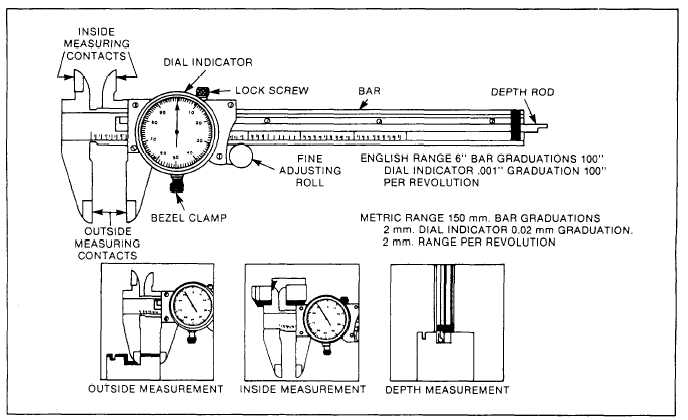4. Move the indicator toward the shaft until the
sensor button just touches the surface you wish to
measure.
5. Continue moving the indicator slowly toward
the shaft until the dial pointer has moved to the midpoint
of its travel on the dial face.
6. Leave the pointer at midtravel and turn the bezel
until the zero on the dial is aligned with the pointer.
7. You can now rotate and watch the pointer to see
if it moves. The total amount the pointer moves is called
the total indicator reading (TIR). If the shaft is straight,
the pointer should remain at zero.
Crankshaft End Play or Thrust Readings
To measure crankshaft end play or thrust, use the
following procedure:
1. Attach the dial indicator to a convenient place
near the vibration damper.
2. Position the dial indicator gauge so the contact
point touches the front of the vibration damper and
moves the dial indicator near the midpoint of its range.
3. Insert one end of a pry bar between a main
NOTE: DO NOT INSERT THE PRYBAR
BETWEEN THE VIBRATION DAMPER AND THE
BLOCK TO MEASURE THE CRANKSHAFT END
PLAY. You may dent the damper and render it
ineffective.
4. Move the crankshaft toward the dial indicator.
Be sure to maintain a constant pressure on the prybar.
5. Set the dial indicator to zero.
6. Remove the prybar and then reinsert it on the
other side of the main bearing cap.
7. Carefully pry the crankshaft in the opposite
direction to measure the crankshaft end play. Repeat
your measurement a minimum of two times for
accuracy.
DIAL/VERNIER CALIPER
The dial/vernier caliper is used to measure the inside
or outside diameter of an object. Figure 2-2 shows a
typical dial/vernier caliper.
Most dial/vernier calipers have a slide, slide
lockscrew, thumb button, scale, dial with measured
bearing cap and a crankshaft counterweight.
increments of 0.001 inch, and a bezel.
Figure 2-2.—Typical dial/vernier caliper.
2-2

